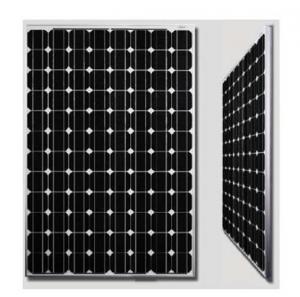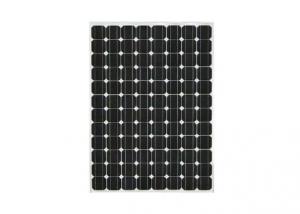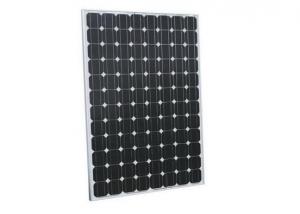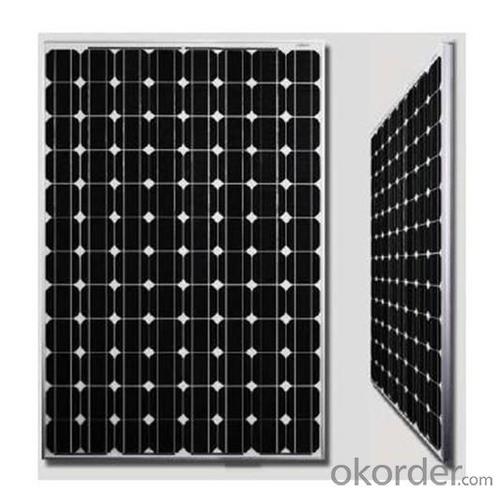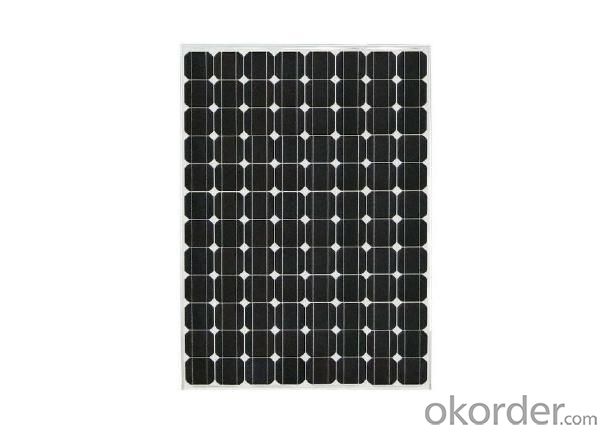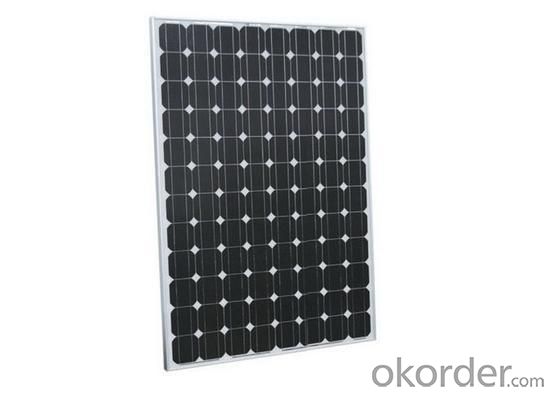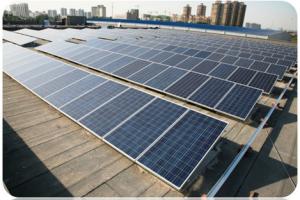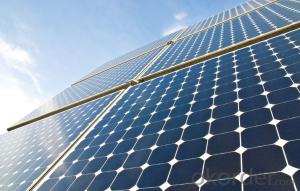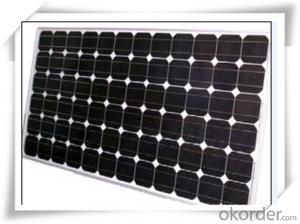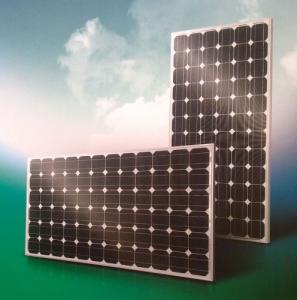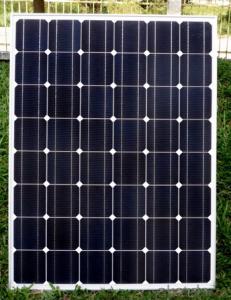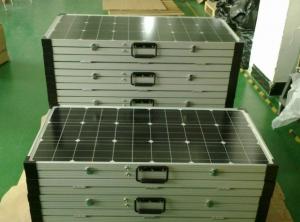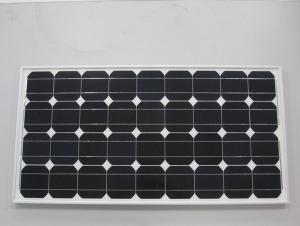Mono Solar Panels CNBM 240W-260W
- Loading Port:
- China Main Port
- Payment Terms:
- TT or LC
- Min Order Qty:
- 100 watt
- Supply Capability:
- 10000 watt/month
OKorder Service Pledge
OKorder Financial Service
You Might Also Like
Characteristics of Mono Solar Panels CNBM 240W-260W
I.Solar Cell : High efficiency crystalline solar cell. Even if under the weak light, the solar module can produce maximum power output.
II.Tempered glass (toughened glass): Anti-reflecting coating and high transmission rate glass increase the power output and mechanical strength of solar module.
III.EVA and TPT: Using high quality EVA and TPT to prevent destroying and water.
IV.AI frame: Without screw, corner connection. 6 holes on the frame can be installed easily.
V.Junction box: Multi function junction box with water proof.
VI.Long lifetime: ≥25 years; Less power decrease.
VII.Good performance of preventing from atrocious weather such as wind and hails.
VIII.Resisting moisture and etching effectively, not effected by geology.
IX.The certificate issued by international authority: UL, TUV, IEC, VDE, CE.
Standard Test Conditions of Mono Solar Panels CNBM 240W-260W
The opto-electrical specifications shown below are stabilized values being measured at Standard Test Conditions, Irradiance: 1000W/m2, Spectrum: AM1.5 at 25°C, The info below is subject to manufacturing tolerances. Where appropriate minutes of measurement are available and are used for the dimensioning of the installation.
Advantages of Mono Solar Panels CNBM 240W-260W
• CNBM Solar performance guarantees for 25 years
• 10 years guarantee for workmanship
• Timeliness of delivery
• Quality Products certified (TÜV, UL, CE, VDE, ISO)
CNBM International Corporation's products including Monocrystalline Solar Panel, Polycrystalline Solar Panel have received and enjoyed famous reputation in many countries and regions in the world .As a solar panel manufacturer in China, we strive to provide our customers with excellent service, superior products and unmatched value.
Datasheet of Mono Solar Panels CNBM 240W-260W
Characteristics of Mono Solar Panels CNBM 240W-260W | |||||
Max Power Voltage Vmp(V) | 50.0 | 50.5 | 51.0 | 51.5 | 52.0 |
Max Power Current Imp(A) | 4.80 | 4.85 | 4.90 | 4.96 | 5.01 |
Open Circuit Voltage Voc(V) | 60.4 | 61.1 | 61.7 | 62.3 | 62.9 |
Short Circuit Current Isc(A) | 5.30 | 5.35 | 5.40 | 5.45 | 5.50 |
Max Power Pm(W) | 240W | 245W | 250W | 255W | 260W |
Temperature Coefficient of Mono Solar Panels CNBM 240W-260W | |
NOCT | 45℃±2℃ |
Temperature Coeffucients of Isc (%/℃) | 0.0981 |
Temperature Coeffucients of Voc (%/℃) | -0.5186 |
Temperature Coeffucients of Voc (%/℃) | -0.4601 |
Mechanical Data of Mono Solar Panels CNBM 240W-260W | |
Dimension | 1580 × 1069 × 45 mm |
Weight | 25.8 kg |
No. of Cells and Connections | 96 (8 × 12 ) |
Tolerance | 0~5W |
Cell | Monocrystalline Cell 125 × 125 mm |
Packing | 616 Pcs / 40ft(H) Container |
Limits of Mono Solar Panels CNBM 240W-260W | |
Operating Temperature | -40℃ to +85℃ |
Storage Temperature | -40℃ to +85℃ |
Max System Voltage | 1000VDC(IEC)/600VDC(UL) |
Guarantees of Mono Solar Panels CNBM 240W-260W | |
Products Guarantee | 10 yrs free from defects in materials and workmanship |
Performance Guarantee | No less than 90% within 10yrs and no less than 80% within 25yrs |
Certificates | TUV(IEC61215&IEC61730),VDE(IEC61215&IEC61730),UL,CE |
The IV Curve of Mono Solar Panels CNBM 240W-260W
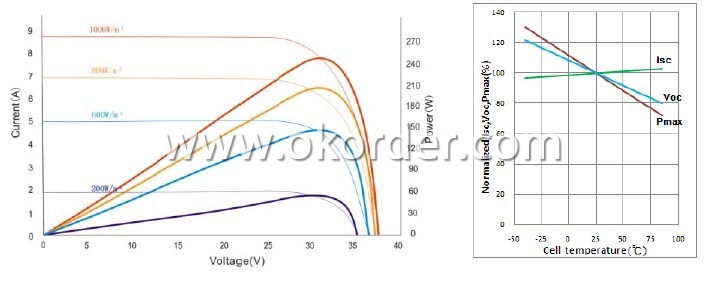
Picture 1. The factory of Mono Solar Panels CNBM 240W-260W
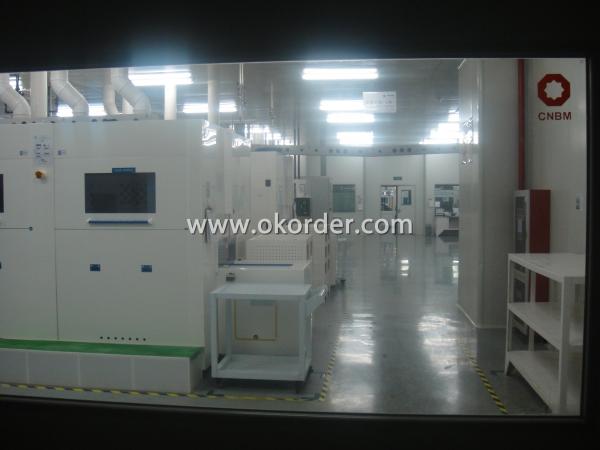
Picture 2. Production of Mono Solar Panels CNBM 240W-260W
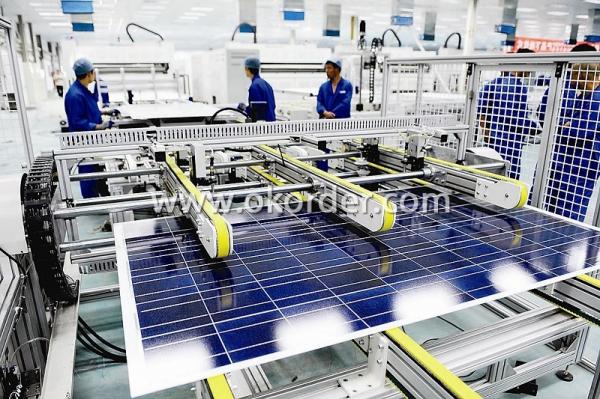
Picture 3. Packages of Mono Solar Panels CNBM 240W-260W
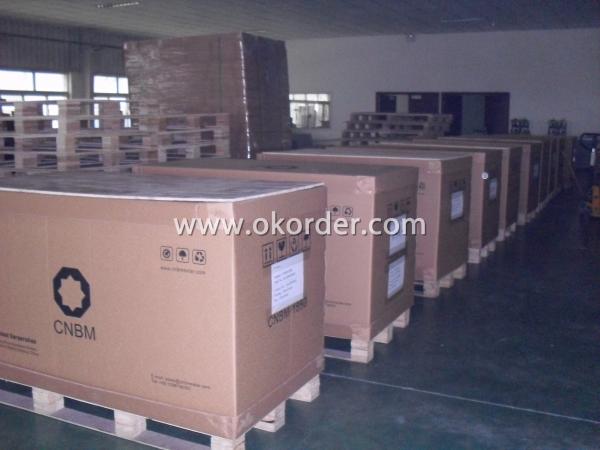
WHY CHOOSE US?
1. Excellent efficiency, Easy Installation & Maintenance
2. Outstanding performance in Low-Light
3. High transparent, Low-Iron, Tempered Glass
4. Ability to withstand High Wind-Pressure and Snow-Load
- Q: I remember hearing somewhere that solar panels may attract light rays away from plants thus having a potentially negative effect on the plants. I can't remember where I heard it but I'm curious if there is any truth to it.
- if that were true, then anything that absorbs the suns rays do the same thing. Doesn't make any sense to me.
- Q: I'm trying to charge rechargeable AA batteries with a solar panel. What guage wire should I use to connect the panel to the batteries? Should I use a diode to keep the batteries from overpowering the circuit? If so, what size? My panel is 4.8V 50mA.
- With that size panel, you should be able to recharge either AA battery, or two AA batteries in series. Yes, it would be a good idea to put a blocking diode in series with the panel - anything will do, like a N448. You will want to use NiCd batteries if possible, because they take a trickle charge of 50 mA much better than NiMH (which prefers pulse charging, a more complicated circuit). You can use NiMH if you must. Needless to say, don't try to charge non-rechargable batteries. Also realize that at this charge rate, it will take days, maybe even a week, to charge the batteries, if left out in full sun all day long.
- Q: Can solar panels be installed on agricultural land?
- Yes, solar panels can be installed on agricultural land. In fact, it is a common practice to utilize agricultural land for solar energy projects. This dual use of land allows farmers to generate additional income from leasing their land for solar panel installations while continuing their agricultural activities. Moreover, solar panels can provide shade to crops, reduce water evaporation, and improve overall farm sustainability.
- Q: What are the financial benefits of installing solar panels?
- Installing solar panels can provide several financial benefits. Firstly, solar panels allow homeowners to generate their own electricity, reducing their reliance on the grid and potentially lowering their monthly utility bills. Additionally, excess energy produced by solar panels can be sold back to the grid, resulting in potential income through net metering or feed-in tariffs. Moreover, investing in solar panels can increase the value of a property, making it more attractive to potential buyers and potentially leading to higher resale prices. Finally, solar panels can also qualify for various tax incentives, grants, or rebates, further reducing the initial installation costs and providing additional financial savings.
- Q: If my school uses 88240kWh of electricity per month and I have 000 50W solar panels running for 6 hours a day, does it mean it will take 88240kWh / {{[(50W x 3600s)*000]/000}kWh x 6} number of hours to generate that much electricity (88240kWh)?
- your first question: Does a 50W solar panel generate 540kWh? 540 kW-hr / 50W = 3600 hours it would take that long for the panel to generate that amount of energy. your second question is confused, as you both stipulate the number of hours at 6 hours per day, and you try to solve for the number of hours. 000 x 50w = 50 kW 50 kW x 6 hr/day x 30 day/mo = 27000 kW-hr/mo = 27 MW-hr/mo that is the amount of energy generated. That is nowhere close to 88240 kWh or 88 MW-hr. I would take 7 times more solar panels to generate that much energy. .
- Q: How do solar panels affect the resale value of a home?
- Solar panels can have a positive impact on the resale value of a home. Studies have shown that properties with solar panels tend to sell faster and at a higher price compared to homes without them. Potential buyers view solar panels as a valuable and eco-friendly feature, leading to increased buyer interest and willingness to pay a premium for a home equipped with solar power.
- Q: Can it be used on a cellphone so u never have to worry about low battery?
- Solar panels (arrays of photvoltaic cells) use renewable energy from the sun, and are a clean and environmentally sound means of collecting solar energy. Solar panels are a great way to generate electricity on a small scale. Solar panels are commonly named solar cells or photovoltaic cells. Photovoltaic means literally light electricity.” Solar cells or PV cells rely on the photovoltaic effect to absorb the energy of the sun and cause current to flow between two oppositely charged layers. Solar panel installation is a cost effective part of the green movement for saving energy. There are different types of solar panels available, including Monocrystalline Panels, Polycrystalline Panel, Cast Polycrystalline Panels, String Ribbon Silicone Panels and Thin Film Panels. Find more information about solar panels at this Web site:
- Q: What is the lifespan of a solar panel?
- The lifespan of a solar panel typically ranges from 25 to 30 years, although some panels can last even longer with proper maintenance and care.
- Q: how to use a motor with solar panel
- A solar panel cannot operate a motor by itself. A typical system operates like this: The solar panel is connected to a charge controller which is connected to a battery which is connected to a motor controller which is connected to the motor. All these components must be compatible with each other. So,in other words, you can't run just any old motor with a solar panel.You can buy a system like an electric gate opener which is solar powered.
- Q: what percentage of sunlight is converted into electrical energy in a solar panel?
- Around 20%
Send your message to us
Mono Solar Panels CNBM 240W-260W
- Loading Port:
- China Main Port
- Payment Terms:
- TT or LC
- Min Order Qty:
- 100 watt
- Supply Capability:
- 10000 watt/month
OKorder Service Pledge
OKorder Financial Service
Similar products
Hot products
Hot Searches
Related keywords
